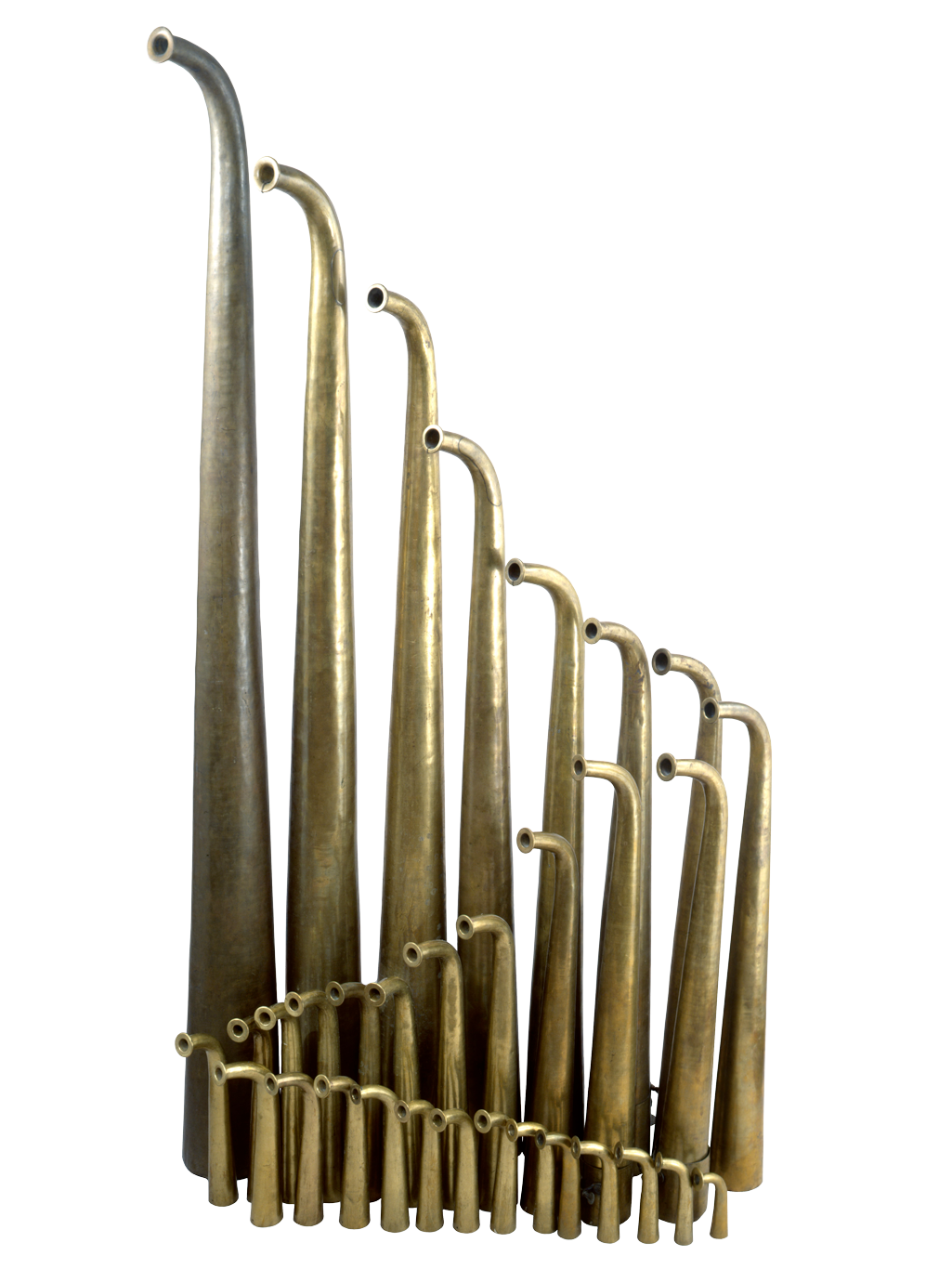Pipes of the horn orchestra

The Historical Museum holds a rare complete set of pipes of a horn orchestra of the XVIII Century. It consists of 47 brass pipes in shape of Russian hunting horns of various sizes. The length of each pipe corresponds to one sound (note) of chromatic scale. The lowest in tone horn has a length of 213 cm, the highest is 13 cm.
Horn music is original and distinctive phenomenon in the history of Russian musical culture of XVIII – early XIX Centuries. Nothing similar existed anywhere in Europe. The distinctive feature of the horn orchestra was that each musician was able to play only one note of a certain tone, so the performance of even the simplest melody required participation of several musicians. The role of the conductor of the horn orchestra in that case became enormous. The number of musician in such orchestra could vary from 12 to 100. The Contemporaries described performances of such orchestras with great admiration. They claimed that it sounded as if several large organs were playing at the same time. The repertoire of horn music included classical music, folk songs and dances, "hunting music" and hymns.
The first horn orchestra belonged to Ober-jägermeister S.K.Naryshkin and was "constructed" in 1750s by his Kapellmeister Czech horn player Jan Maresch, who improved the Russian hunting horn, turning it into a musical instrument. Due to benevolence and support of Empress Elizabeth horn music became very popular. Noble families tried to maintain at least a small horn orchestra. The horn orchestra of Catherine II had over a hundred horns. In the 1820s, even some military orchestras had choirs of horn music. There horn music orchestras in Russia existed only for a very short time. The complex training and playing horn pipes, the high cost of maintaining of such orchestras contributed to disappearance of this type of music already in the 1830s.
